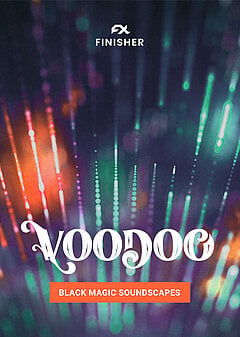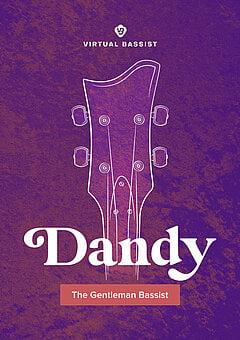The Ultimate Guide to R&B
Discover how the masters write, produce, and mix one of the most diverse genres in the contemporary music industry
JULY 25TH, 2021
Read this article and you will understand what makes R&B so special and differs this genre from others:
The genre originated in the 1940s, though its meaning and influences have changed considerably over time. Originally, it drew upon jazz while applying a stronger core beat with piano, guitars, bass, drums, saxophones and vocalists. In the 1950s, the focus began to shift toward blues, around which time it also contributed to the development of rock and roll; it also grew synonymous with gospel and soul influences.
These rapid changes continued into the late 1980s, when truly modern R&B began taking form. We’ll focus on contemporary R&B, but it’s worth noting that its groundwork was laid many decades ago ... and the genre continues to grow and develop.
Beat
R&B is different from many other genres in that the beats are so wide ranging in style and pattern. That said, you can usually start with 4 to the floor and make adjustments from there. If you enjoy being creative, you can try using a ton of syncopation with the kick heavily spaced out. Ne-Yo’s song Miss Independent does this perfectly:
R&B revolves around implied beats — as in, what happens in between the kick and snare hits. You can accomplish this through a variety of percussion instruments, hi hats, etc. but the beat doesn’t need to be ‘busy’ to create the motion you want. In fact, the more relaxed you can make the beat (up to a certain point, of course), the more natural it will sound. For example, listen to Faith Evans’ Love Like This:
It creates a driving beat, but there’s a certain ‘laziness’ to it that hangs perfectly in the balance between pushing and relaxing. Frequently switching up the kick and snare pattern will help here, along with quantizing to a specific rhythm slightly off the grid. Ableton Live’s Groove Pool is a great way to accomplish this, but if you don’t have a similar tool at your disposal, you can manually drag individual notes into the placement you want and loop the result for as long as you like. Straying even a little away from the grid makes a huge difference; the robotic nature of perfect quantization is one of the easiest ways to kill the vibe.
You can also use one of the beats preloaded into one of UJAM’s Beatmakers like KANDY — the MIDI’s already programmed with a natural feel, and you can drag it into your DAW session and manipulate it as you see fit. Programming notes off the grid is worth it sometimes, but it’s time consuming; if you want to cut out most of the manual work, try using a Beatmaker!
R&B basslines
The dead space where the bass isn’t playing is just as important as the bassline itself in R&B. You want to keep it light and punchy, with plenty of bounce in the rhythm. Check out the bass line in Always on Time by Ja Rule and Ashanti:
About half the time, you can hear a constant 16th bassline staying on one pitch; but the rest of the time, the only true low end comes from the kick and snare cross stick hits. It would be way too much to have the bass going the whole time — but it’s easy to listen to even a driving bass like this when you don’t hear it constantly. You can also use the bass to punctuate the kick and chord changes, leaving the rest of the space open. Where the Party At by Jagged Edge and Nelly is an excellent example of this. This also keeps the bass nice and punchy since you typically hear it coupled with the kick, combining their transients into one.
If you’re not using a live bass player, it’s tricky to get this punchy, fluffy quality with most bass VSTs — but we created Virtual Bassist DANDY for this exact purpose. Try it out for free — you’ll find it much easier to get the warmth and percussive nature you’re looking for, and it has tons of basslines already programmed in that you can manipulate on your own using its MIDI Drag & Drop feature. Open up the Softy preset; it’s round and punchy, and you can seamlessly slide it into any R&B track you like!
R&B chords and instrumentation
You may notice similarities between R&B chords and jazz chords — they incorporate a lot of the same characteristics, like sevenths and extensions; and while the progressions are different, R&B’s chord progressions are quite different from a lot of other popular music. They’re commonly played with electric piano and electric guitars, with an electric bass guitar creating the foundation.
R&B especially shines in its use of background vocals. Take Because of You by Ne-Yo, for example: the backing vox shine through, carved into just the right place in the mix so they never get in the way of the lead singer. They’re so carefully arranged that they become a chord instrument in their own right:
Since R&B is such a diverse genre, rather than seeing specific guidelines which don’t usually hold true, listen to a variety of different artists to see what they do differently. Chord progressions in some of Doja Cat’s most popular songs closely follow classic jazz progressions, whereas you’ll hear simpler, popular chord progressions when listening to Ariana Grande. There’s no way to properly classify ‘strains’ of R&B, which only serves to further differentiate artists from each other.
Chord instruments often have a ton of ‘shimmery’ effects added, such as gentle ping pong delays and plate reverbs along with a host of other subtle effects. UJAM’s Finisher VOODOO is a great way to achieve this without having to chain a ton of different effects together — plus, it was specifically designed with guitars in mind and you can use it to evoke this feel quite easily.
Modern R&B production and mixing
One of the most immediate differences between ‘classic’ and contemporary R&B mixes is that recent R&B has a lot more low and high end frequencies, while the mids are heavily scooped out. It’s very difficult to achieve this balance without making your mix sound brittle and dimensionless, so you certainly don’t want to go overboard. Give your vocals and chords a slight boost with a high shelf EQ and brutally cut the low end from any tracks that don’t need it — you’ll get some extra high frequency shimmer and more space for your bass and kick to cut through, and you’ll have an easier time finishing up your mix from there.
In R&B, the vocalist must shine through — great producers typically give vocals plenty of room to breathe; jokes aside, accentuating breath noises creates a very intimate feel, and many artists use this masterfully. In terms of processing, you’ll often hear long reverbs with the low end completely rolled off via a high pass filter to further emphasize the high frequencies and add dimension. R&B vocals are typically clean, electing not to use much if any distortion; it’s more about the character of the singer’s voice. You’ll also hear a lot of heavily autotuned vocals; not on every song, but on many of them. This is largely a stylistic choice, closely tied to a vocalist’s or producer’s brand.
A lot of contemporary R&B still uses acoustic drum kits — but even in songs that don’t, they tend to use acoustic drum samples, rather than synthesized samples like you commonly hear in EDM or trap. Despite how many changes the genre has gone through, certain nuances like this show how in touch it is with its roots. The production style varies, but many of the core sounds stay the same. As you listen to the genre, take note of how many subtle ways R&B artists find to place a unique stamp on their songs — vocal, arranging, drum sample, chord and mixing styles all come into play, making for an endlessly deep genre to immerse yourself in.
Wrapping up
R&B is constantly evolving, and has been at the epicenter of many of the genre developments of the twentieth century. The use of specific production techniques, drum sampling and more move it toward trap in the hands of some artists, while others prefer a more traditional approach that keeps it anchored in its roots. Due to so many varying styles, it’s possible R&B will never have a singular, fixed identity — which is all for the better, as it’s responsible for some of the most innovative and beautiful music available.
When you hear something different you enjoy, take note of it; you can even toss all your R&B ‘study materials’ into a Spotify playlist and have them on hand when you go to create your own
Stay up to date
Sign up and we’ll send you an e-mail with product news and helpful stuff every now and then. You may unsubscribe at any time.
Defy Limits
We develop software solutions that enable people to create, consume and interact with music.



